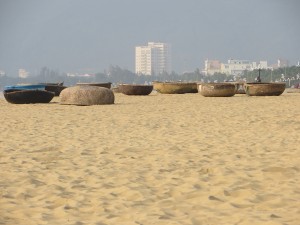Today’s book review is Asia’s Cauldron: The South China Sea and the End of a Stable Pacific, by Robert Kaplan.
Robert Kaplan is an American journalist and foreign policy adviser. Although this book is about Asia, he writes this book not so much an Asian expert (although he clearly is), as an American foreign policy expert, and so this book is as much about the implications of what is happening in Asia on US Foreign Policy as it is about Asia itself.
The central thesis comes at the beginning of his first chapter:
Europe is a landscape; East Asia a seascape. Therein lies a crucial difference between the twentieth and twenty-first centuries.
Because of the way that geography illuminates and sets priorities, the physical contours of East Asia argue for a naval century, with the remote possibility of land warfare on the Korean Peninsula being the striking exception.

And the US-centric part of the book becomes evident in the second chapter, entitled “China’s Caribbean”, where Kaplan writes, for an American audience about how the South China Sea is similar to the Caribbean, to help US audiences understand his key points.
The key geographical fact about the Caribbean is that it is close to America and was far from the great European powers of the age, just as the South China Sea is close to China but far from America and other Western powers.
Obviously there are great differences between the American and Asian Mediterraneans.
And yet there is a glaringly obvious similarity. They are both marginal seas that are extensions of continental-sized nations: the United States and China.
For me, that comparison, which is quite a stretch, doesn’t much help, but that is because I’m not American.
As the quotes above make clear, this book focuses on the military implications of the geography of Asia, particularly South-east Asia, informed by the massive economic changes that have taken place in the region in the last twenty or so years, but not really focusing on them. There is a considerable focus on the various territorial arguments that are increasingly part of any Asian discussion; including the Pratas, Paracels and the Spratlys in the South China Sea, which are claimed by up to six different countries. There is a chapter each on Vietnam, Malaysia, Singapore, the Philippines, Taiwan, and finally (although it is omnipresent in all the previous chapters), China.
Ultimately Kaplan is of the view that China’s increasing economic might is logically going to lead to China’s military might increasing, and potentially being used to enforce its rights (or China’s view of its rights). He ends by comparing the situation with the Peloponnesian War between Athens and Sparta, which according to Thucydides was caused by the rise of the Athenian sea power and “the alarm which this inspired in Sparta.” Kaplan doesn’t have any very specific recommendations for US policy, beyond continuing focus on Asia, and particularly the South China Sea.
The South China Sea, whether in peace or in war, allows one to imagine the world as it is, and as it is to become. It is a nervous world, crowded with warships and oil tankers, one of incessant war games without necessarily leading to actual combat….A more anxious, complicated world awaits us.

This book was a good reminder for me that what happens in the world is not just about economics. Kaplan largely takes the economic changes in the region as given, and focuses on what the geography means for potential hostilities and strategic posturing. Economists have a habit of assuming that people, and by extension countries, are economically rational. War is, economically, almost completely irrational. But still it happens, and fundamentally changes the landscape of the world on a regular basis.
There are numerous quotes from Australian analysts in this book, reminding this Australian that even though we beat ourselves up for not paying enough attention to Asia (given our location) Australians are still often the English-speaking experts on the region. Whatever happens in Asia in the next century will affect Australian profoundly just as it has in the last century.
Despite its occasional US-centricity, this book is worth reading for anyone interested in the region, and a good reminder that geography, as well as economics and politics, matters in thinking about the world.
_______________________________________________________________________
Disclosure: I received a free review copy of this book via NetGalley.

